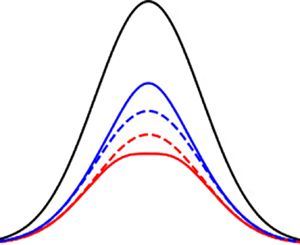No CrossRef data available.
Article contents
Nonlinear internal wave reflection and transmission at an interface
Published online by Cambridge University Press: 23 May 2023
Abstract

The reflection and transmission of internal waves at a horizontal interface between layers of constant buoyancy frequency are treated. This interface is a simple model of the atmospheric tropopause. The waves are weakly nonlinear and obey the nonlinear Schrödinger equation away from the interface. The waves are horizontally periodic and vertically confined to a long packet. The interfacial conditions are formally taken to third order, and include higher-order linear as well as nonlinear effects. The higher-order linear affects show an instability at the interface for steep waves. Numerical results for shorter wave packets show that the higher-order linear terms result in non-physical wave generation, and are ultimately neglected for such cases. Nonlinear effects result in a decrease in the reflected wave amplitudes and an increase in the transmitted wave amplitudes when compared to linear theory. Overall, the nonlinear effects make the interface more transparent to upwardly propagating internal waves.
- Type
- JFM Papers
- Information
- Copyright
- © The Author(s), 2023. Published by Cambridge University Press



